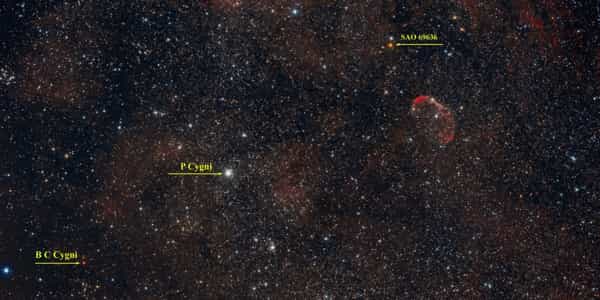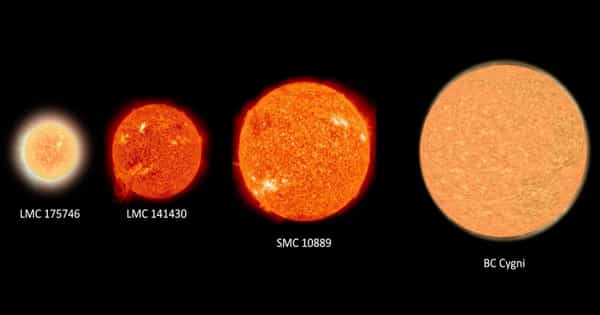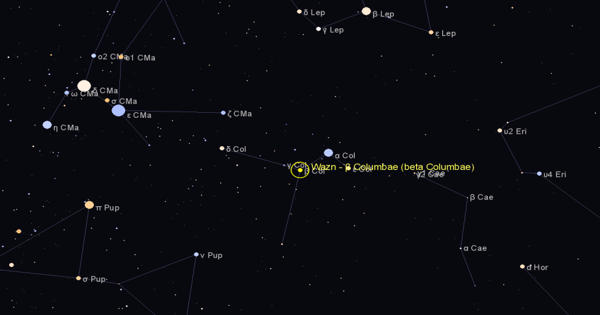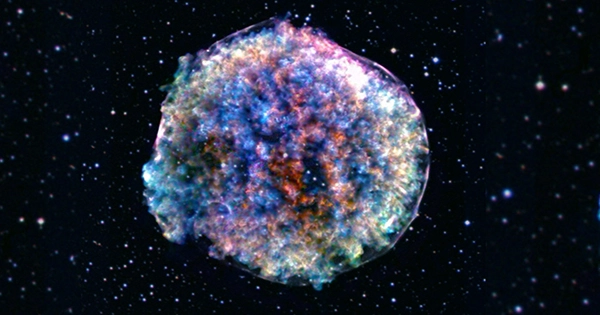BC Cygni is a red supergiant and pulsating variable star in the constellation Cygnus with the spectral type M3.5Ia. It is a Supergiant Star with a high luminosity. It is not part of the Cygnus constellation outline, but it is within its boundaries.
It is considered a member of the stellar Cygnus OB1 association, and within it the open cluster Berkeley 87.2, which would place it at a distance of 1,500 parsecs (4,890 light-years) from the Sun; however, according to the parallax measurement by the satellite Hipparcos, it is closer to the Sun (1.20 milliarcseconds). It is less than a degree north of BI Cygni, another variable red supergiant.
BC Cygni was calculated to have an effective temperature range of 2,858 to 3,614 K and a volume range of 112,000 to 145,000 L☉. It is one of the largest stars discovered in the Milky Way, but it is not the largest; that honor goes to UY Scuti. The size at its brightest and coolest has been calculated to be 1,553 R☉, compared to 856 R☉ at its hottest and faintest. It is one of the largest stars known. If it were in the Sun’s orbit, its photosphere would engulf Jupiter’s orbit, assuming a maximum radius of 1,553 R☉. With a mass of about 19 M☉, it is estimated that the stellar mass loss, as dust, as the atomic and molecular gas could not be evaluators, is 3.2 ×10-9 M☉ per year.

BC Cygni is a red supergiant star with a spectral type of M3.5Ia. Based on the spectral type, we can deduce that the star’s surface temperature is in the range of below 3,500K, according to Harvard University notes. Using the original Hipparcos data released in 1997, the parallax to the star was given as 2.84000, resulting in a calculated distance to BC Cygni of 1148.46 light-years or 352.11 parsecs from Earth. If you want it in miles, it is approximately 6,751,366,096,086,448.74, based on 1 Ly = 5,878,625,373,183.61 miles.
BC Cyg’s brightness varies between visual magnitude +9.0 and +10.8 over a period of 720 40 days. Its average brightness appears to have increased by 0.5 magnitudes between 1900 and 2000. It has an apparent magnitude of 8.42, which is a measurement of the star’s brightness as seen from Earth.
















